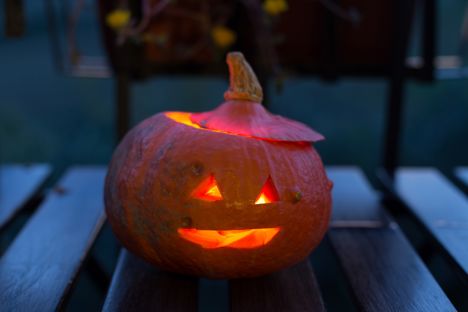
Halloween in Italy
Giula remembers celebrating the festivals of All Saints and All Souls growing up a child in Italy, and looks at the roots of some of the Halloween celebrations we see today.
Halloween in Italy
Giula remembers celebrating the festivals of All Saints and All Souls growing up a child in Italy, and looks at the roots of some of the Halloween celebrations we see today.
Halloween celebrations do not belong to our traditions, they have been imported from the USA thanks to movies, TV series and cartoons. When I was a little child in primary school, I used to look forward to the end of October to have a day off to celebrate the day of All Saints on the 1 November. It was just a religious celebration, followed by All Souls day on the 2 November. You would pay a visit to the cemetery on that week to pray on your loved graves and put fresh flowers next to their photos, then on the 1 November you would go to Mass in the morning and, as always happens in Italy, you would sit at the table with family for a large meal, a festive one.
We’ve been celebrating our dead for more than a thousand years, as All Saints Day was introduced by Pope Boniface IV in the 7th century to remember the martyrs, the Saints killed to defend their faith. At the beginning the chosen day was in May, then it was moved to the beginning of November to replace the pagan festival of the end of summer.
Halloween has a similar origin: it was known by the Celts as Samhain and originally it was a day to remember and honour the souls of the dead.
When my younger sister was at primary school, though, some habits began to change: they started celebrating Halloween with afternoon parties. They would choose a scary costume and visit neighbours screaming 'dolcetto o scherzetto', the Italian for trick or treat. Nowadays it is a purely commercial event, an acquired celebration, just another excuse to have a party.
Traditionalists turn up their noses at carved pumpkins, skeletons and witches, asserting that those customs do not belong to us. Are we sure?
When my grandma was a child, at the end of summer farmers would pick up the huge yellow pumpkins left in the fields after summer. They would keep the good pumpkins and squashes for the winter, leaving those too large as food for animals, for pigs for example, or for the children to play.
They would empty and carve those pumpkins, drawing eyes, a nose and mouth, then they would place a lit candle inside.
My grandma used to hang the carved pumpkin over the well and during long dark autumn evenings it would produce a ghostly effect that scared other children. Those carved pumpkins were known as morte secca.
Years before the American soldiers passed through Italy bringing hope, chocolate and rock 'n' roll, we used to carve pumpkins and whisper dreadful stories in front of huge fireplaces in smoky country kitchens.


